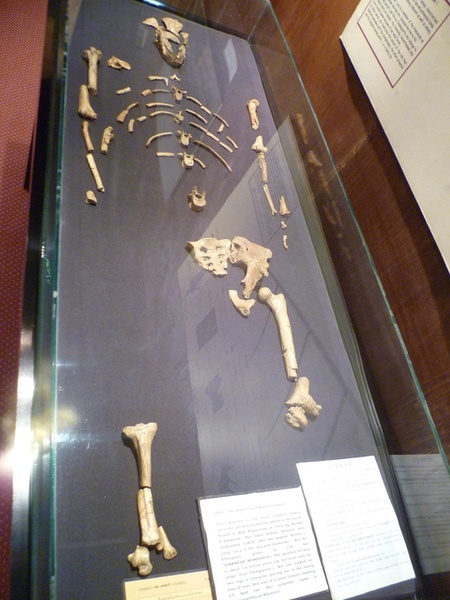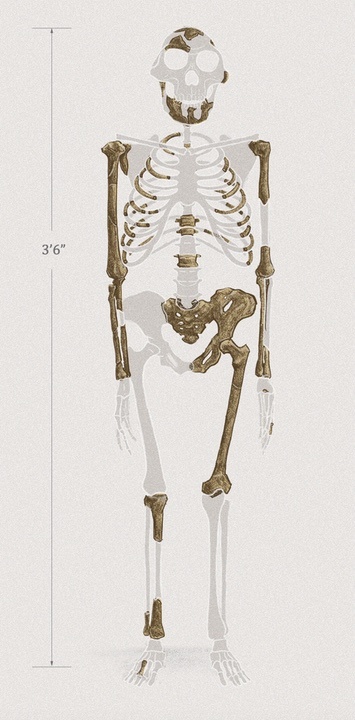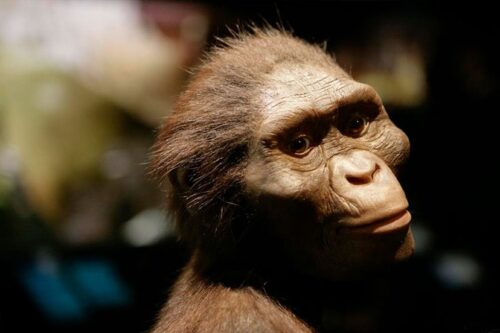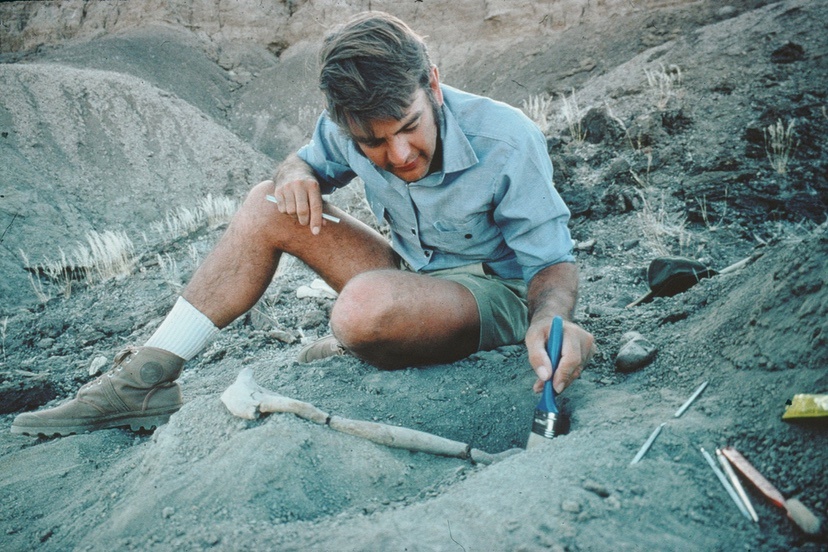Here’s that 1975 photo from Part One, showing paleoanthropologist Donald Johanson in the Ethiopian desert, posing for a photograph, as if he’s just discovered another fossil similar to the world-altering collection of fossils that the world now knows as “Lucy”. (He and his team had dug up Lucy’s fossil bones a year earlier.)
We can assume this is a posed photo, because Dr. Johanson is wearing perfectly clean white socks. There’s no way you could possibly keep your socks that clean, if you were honestly digging fossils in the Ethiopian desert.
Reportedly, Dr. Johanson returned to camp in 1974 with some of Lucy’s fossilized remains, and as team celebrated, someone popped a cassette into the tape player. The song that began playing was “Lucy in the Sky with Diamonds” by John Lennon and Paul McCartney.
As most of us know — even though John Lennon and Paul McCartney consistently denied it — the song “Lucy in the Sky with Diamonds” refers to LSD.
Picture yourself in a boat on a river
With tangerine trees and marmalade skies
Somebody calls you, you answer quite slowly
A girl with kaleidoscope eyes
Cellophane flowers of yellow and green
Towering over your head
Look for the girl with the sun in her eyes
And she’s gone…
This was the perfect song to celebrate the discovery of Lucy’s fossilized remains, because the whole history of human evolution, before and after the arrival of Lucy, has been sort of a psychedelic trip.
Dr. Johanson told Washington Post reporters last week that, as a kid growing up in Connecticut, he got a book from a neighbor that planted an electrifying idea in his head.
“Someday, a fossil would be found of a human, more ape-like, or an ape, more human-like, than had been found by anyone…”
It’s not clear which category applies to Lucy. But I’m going with “an ape, more human-like”.
The actual fossils are on display at the National Museum of Ethiopia. Several other museums own cast copies of the Lucy fossils, and have put them on display. So you could say, she’s internationally famous.

Lucy — her scientific name is A.L. 288-1 — appears to have stood about 3 1/2 feet tall, with a body that blended features of apes and humans. Her Ethiopian name is ‘Dinkinesh,’ which means “You are marvelous” in Amharic. (NOTE: No reference there to LSD.) For comparison, adult chimpanzees stand about 5 feet tall in their socking feet.
As mentioned in Part One, Lucy was partly discovered in Ethiopia, in the Danakil Depression. “Partly discovered” in the sense that only certain parts of her were found.
The Washington Post provided a drawing of the parts that were found and subsequently analyzed. As we see, quite a few parts were missing.

To the naked eye, Lucy’s parts (and missing parts) might remind you of a chimpanzee more than of your Aunt Martha. But scientists tend to have vivid imaginations, when it comes to theories about evolution.
One of the first things I noticed was the serious absence of facial bones. For Lucy’s head, we got a little bit of the top of the skull and parts of the bottom jaw. And not much else.
Which might cause one to wonder how a museum sculptor came up with this model of Lucy’s face.

Like, is this an undersized chimp? Or one of my ancestors?
We note that Lucy’s hands and feet are missing. (To be discussed later.) But there’s a part of her pelvis and a couple of leg bones.
Once upon a time, the scientists, who were chasing evidence proving that humans descended from apes, thought they would find a ape-like “missing link” with a large brain. (Humans have a larger brain than apes, though we don’t always make good use of it.) But it seems most of the “missing link” fossils they’ve managed to dig up — like Lucy — have small skulls and limited cranial capacity. Monkey brains, to put it bluntly.
Not to be discouraged, the paleoanthropologists have taken a different tack. Since they can’t find a lot of fossil remains with human-size brains, they’ve taken to looking at leg bones and hip bones, to prove to themselves that — maybe our ancestors weren’t any smarter than apes, but at least they could walk upright, like us.
Sort of a consolation prize.
Underrated writer Louis Cannon grew up in the vast American West, although his ex-wife, given the slightest opportunity, will deny that he ever grew up at all. You can read more stories on his Substack account.

